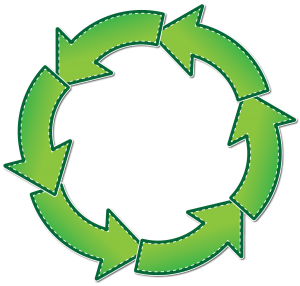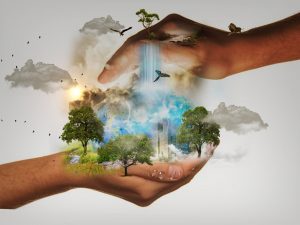A Green Business Model: Cradle to Cradle

Cradle to Cradle is an important new business model. It promotes circular economy and sustainability by reducing resource drain and waste production.
Cradle to Cradle’s closed loop design breaks free from the conventional linear model of production, consumption, and waste disposal.
Conventional production requires a continuous supply of new materials, whether they are non-renewable metals or renewable bio-based materials.
First of all, mining for new materials destroys fragile ecosystems. Metals are also limited in supply and will eventually diminish to a point where mining them becomes uneconomical and unfeasible. Moreover, most of the metals have no real substitute (1).
Bio-based materials from wood or crops can be used. However, this places an extra demand on land and other resources. And it can compete with production of food or fodder. This has already happened due to widespread promotion of bio-fuels.
Many production processes can also be harmful to the environment or people involved. The current way of designing production, generates waste at the end of the product life. The life of most products can be extended by repair, reuse, and recycling. Ultimately though, at least part of the materials used to make a product, will end up as waste and in a landfill. This is the result of the conventional linear model.
Cradle to Cradle is different from the usual product design process. People think about reusing and recycling waste even when in the planning and product development stage. The issue of waste is not as an after-thought. Products are designed and assembled, so that at the end of their life, different components are disassembled and reused to make new products. Or the separated parts are used to make new material.
So, though mined metals are used they never end as waste. Similarly, biological materials are composted. So circular economy uses and reuses the same materials.
Sustainable use of resources is at the heart of y circular economy.
Cradle to Cradle design also depends on using materials that have no or little impact on the environment – during production, use, or at the end of the product life. People following Cradle to Cradle method use renewable energy. They also avoid polluting water, air, or land during production (2).
This calls for scientific and technological innovations, and also a well-coordinated take-back system. Thus, all sectors of the business have to act towards achieving a circular economy. Needless to say the customer’s cooperation is integral to the process.
This closed-loop model of business is becoming increasingly popular, and many countries and corporations around the world are using it. The concept has come a long way, since its introduction in 1987.
The Cradle to Cradle Products Innovation Institute certifies products made by applying circular principles. These products range from fashion products like nail polish, detergents, garments, furniture to building material (3).
In a world defined by consumerism and fast innovation, it is not always necessary to sacrifice convenience or turn frugal to save the environment.
Circular business models like Cradle to Cradle design can give sustainable and green solutions by avoiding many of the environmental problems created due to current production methods.
Sources
- http://www.bbc.com/future/story/20140314-the-worlds-scarcest-material
- http://www.epea.com/about/
- http://www.c2ccertified.org/

